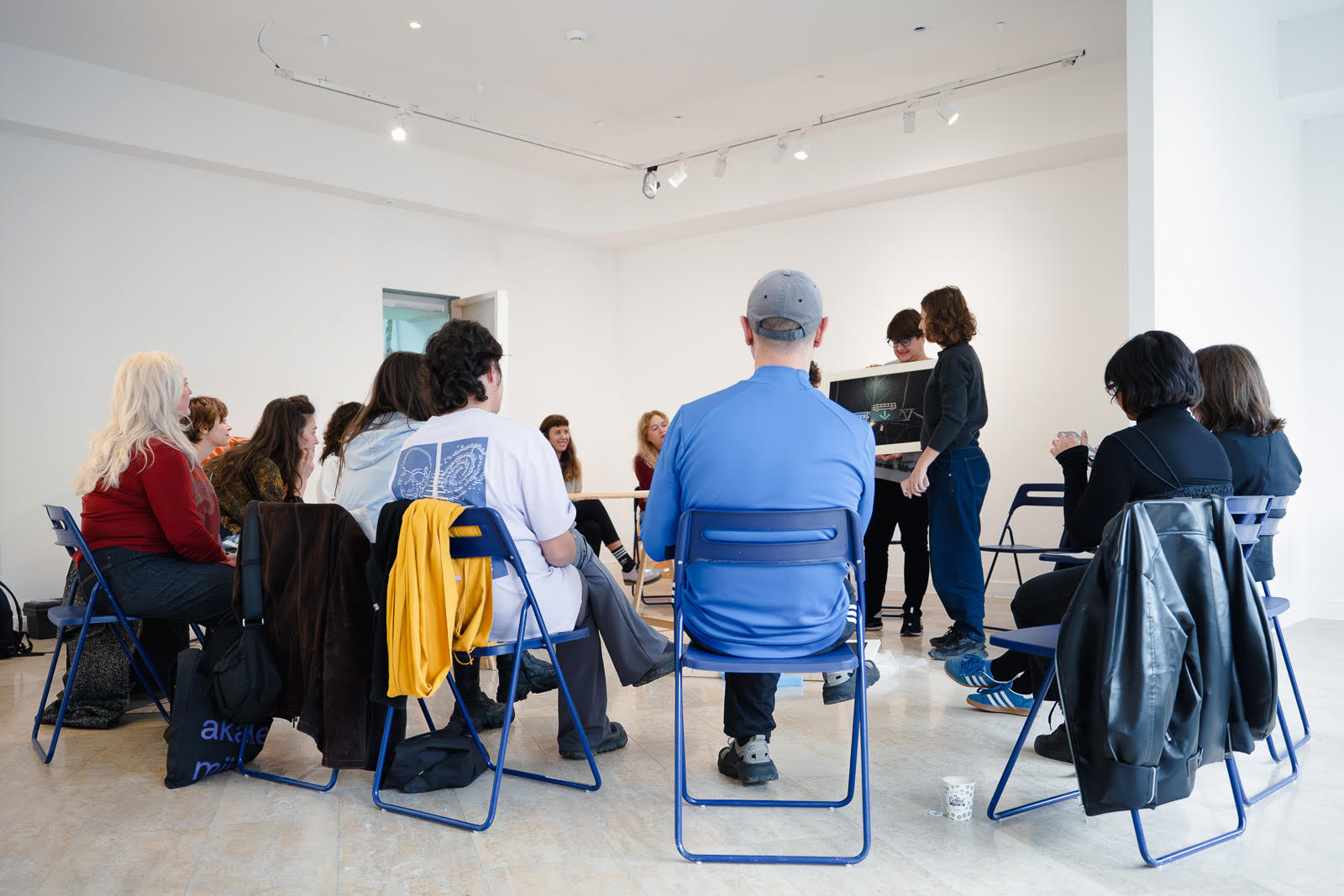Please introduce yourself, describe what your artistic practice is focused on at the moment?
I am Ivana Mirchevska, an interdisciplinary artist born and living in Skopje, North Macedonia. My artistic practice is research-based, aiming to critically and ecologically engage with the nature-culture binaries inherent in patriarchal and anthropocentric visual narratives. Currently, I am interested in exploring positions of intercorporeality, agency, and care through the lens of agential landscape, vibrant surfaces, and diffraction as conceptual frameworks, which inform my work in building speculative environments and hybrid installations.
What are your real and desired conditions for art production?
Current:
- funding and deadlines shaping the pace and ways of practice;
- simultaneously being the artist, producer, and curator of my own work;
- being overworked.
Desired:
- long term funding opportunities;
- non/institutional spaces dedicated to artistic process and research;
- slowness, conversation, imagination and affection as a form of resistance to the structures that render the practice precarious.
What are your experiences of collaborative art and educational practices so far?
I love meddling in murky waters, delving into the complexities of gendered perspectives and interfering with established practices of looking. In this pursuit I meet human and non-human friends and foes and their respective agencies and vibrancies; I take their inputs as those of collaborators, fellows, co-participants, and teachers.
In my last participatory project, Humanoid Troubles, which was based on the interaction between participants and our non-human alter egos, I tried to transform my practice into a space for exploring intercorporeality, entanglement, and togetherness, all the while nurturing compassion and mutual support within our sensory and technological limitations, in light of our shared precarious ecological future.
Throughout my practice I closely collaborate with Ishjan Twin, Elena Chemerska, Amir Karahasan and Natasha Nedelkova, among others. In 2014, in response to the cultural institutional capture and ecological pollution in the city of Skopje, I, along with 10 other individuals as part of the Kula Collective, initiated Underground is Easier to Breathe – an artist-run platform for ephemeral and experimental art practices.
How do these times of economic, social and ecological crises affect your art practice?
Both my research and work are driven by the desire to create moments for collective reimagining of entrenched perspectives, fixed geographies, and vertical biases (a term borrowed from Melody June's book "Wild Blue Media"). In my practice, I often explore notions that challenge fixed gender norms, subjectivity, identity, relational dynamics with others, orientation, and representation. To achieve this, I invent process methodologies like "surfacing" and "sonic meditations" among others, that embrace the vulnerability of the body and look at its capacity to create alliances without homogenizing differences. When considering diverse positions, I tend to conceptualize them as speculative and fictional amalgams, such as alter egos, entities, sonic ghosts, surfaces, angles of perception, and voices.
Name about 10 words/associations/notions that first come to your mind when you think of engaged eco-social participatory practices?
Differences that matter, intercorporeality, agential, intra-activity, transmutation, affect economy, polymorphism, multitude.
.jpg)


